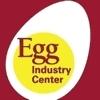Explore all the information on
Poultry welfare
Proper animal welfare involves providing the proper housing, management, nutrition, disease prevention and treatment, responsible care, humane handling and, when necessary, humane euthanasia. These factors allow for the most optimal and humane growing environment. The concept of animal welfare includes three elements: the bird’s normal biological functioning, its emotional state and its ability to express its natural behaviors. Improving animal welfare can be accomplished through offerings like poultry feed enrichment, which can reduce stress, thereby increasing performance, productivity and profitability. Animal welfare is currently a major requirement for intensive poultry production. Beak trimming, stocking density, free access to feed, heat stress, and air pollutants became important issues, which are regulated in several countries. Animal welfare is observed by watching how birds naturally behave and even by looking at mortality stemming from aggressive behaviors.
Broiler farming is a dynamic business, but one of its biggest challenges is managing birds during hot and humid conditions. While broilers are bred for rapid growth, their ability to regulate body temperature is limited, making them vulnerable to heat stress. Signs of Heat Stress: 1. Increased panting and open-mouth breathing. 2. Increased water intake and reduced feed intake. 3. Lethargy and reduced activity levels. 4. Restlessness and seeking shade. Causes...
Comments : 0
Recommendations: 0
Jamie McIntosh, Global Technical Services Manager and Cage-Free Specialist at Hy-Line International, shares key insights on cage-free systems, their growing impact worldwide, and best practices for producers looking to make the transition. ...
Comments : 0
Recommendations: 0
INTRODUCTION The ability to maintain an affordable, safe, and sustainable food supply is a global challenge. Meat consumption trends are changing, with increasing preferences for cheaper and processed white meat and a decline in cereals share of the total food (Sefeedpari et al., 2013; Faridi et al., 2011). The consequent increases in poultry meat production by a factor of seven (3206%) and eggs by a factor of three have overburdened sustainable production (Sousa et al., 2005)....
Comments : 0
Recommendations: 0
The Impact of Hot Weather and Humidity on Broiler Performance: Challenges and Solutions - A.Ashraf Broiler farming is a dynamic business, but one of its biggest challenges is managing birds during hot and humid conditions. While broilers are bred for rapid growth, their ability to regulate body temperature is limited, making them vulnerable to heat stress. This article explores how high temperatures and humidity impact broilers, the consequences for farmers,...
Comments : 0
Recommendations: 0
.jpg&w=3840&q=75)

Introducing Afla-V ONE: Fast, precise aflatoxin detection for complete feeds and pet foods
Suggested link
Maria Fernandez Cuadrado (University of Arkansas) speaks about her research Impact of heat stress on hepatic lipogenesis in broilers: a comparison of low- and high-water efficient lines, presented at the IPSF 2025...
Comments : 0
Recommendations: 0
About this Webinar (Free for PSA Members!)
In today's competitive poultry industry, optimizing bird performance is essential for maximizing productivity and maintaining a healthy flock. This webinar will explore science-based strategies to enhance efficiency, improve overall...
Comments : 1
Recommendations: 0
Annie Kneedler (Chief of Party – USAID TRANSFORM at Cargill) comments on the TRANSFORM project activities and how to improve animal health through global collaboration, in this Engormix interview....
Comments : 1
Recommendations: 2
Anke Förster (Agri Advanced Technologies) explains how to detect the sex of the developing embryo through hyperspectral imaging, in this Engormix interview during IPPE 2025 in Atlanta, USA....
Comments : 0
Recommendations: 0
Jörg Hurlin (Agri Advanced Technologies) discusses their specialized systems for hatching egg sanitation, in-ovo sexing, and breeder sorting in this Engormix interview during IPPE 2025 in Atlanta, USA....
Comments : 0
Recommendations: 1
Mike Petrik (Petrik Veterinary Consultants) discusses four in-ovo sexing technologies and their differences in this Engormix interview during IPPE 2025 in Atlanta, USA....
Comments : 0
Recommendations: 1
Angela Guaiume (Cargill) explains the benefits and impact of this technology on egg production and persistency of lay, in this Engormix interview during IPPE 2025 in Atlanta, USA....
Comments : 0
Recommendations: 0
Dr Pooja Bhardwaj, General Manager at Lavizen Health Care, speaks about the critical role of liver health in poultry nutrition. Even with proper digestion, a compromised liver due to toxins or viral infections can significantly hinder the efficient metabolism of nutrients. This complex topic warrants further in-depth exploration in future discussions....
Comments : 0
Recommendations: 3
Naresh Kumar Arora (Arora Feed Mills) shares insights on his company's challenges, including manpower shortages and the need for eco-friendly poultry farm structures in India’s extreme climate. He highlights projects like transitioning to controlled environment farms and using AI to detect diseases through bird movement analysis, emphasizing his vision for innovation and sustainable growth in the poultry industry....
Comments : 0
Recommendations: 0
I. INTRODUCTION Severe feather pecking (SFP) is an abnormal behaviour which reduces both hen welfare and the efficiency of egg production. While the specific causes are unknown, it is acknowledged to be multifactorial, complex and unpredictable (Rodenburg et al., 2013; Hartcher et al., 2016). The problem is compounded because the behaviour seems to spread rapidly via social learning (Zeltner et al., 2000) and is therefore difficult to control in large groups of hens. A reliable...
Comments : 0
Recommendations: 0
Drinking behavior in poultry develops within the first couple days of life. When an open water source is provided, birds stick their beak roughly 10 mm into the water, use a scooping motion to collect water in their beak, extend...
Comments : 8
Recommendations: 1
I. INTRODUCTION The meat chicken industry is growing rapidly as a result of an increasing population, relatively low production costs and excellent marketability with regards to affordability, sustainability and minimal religious restrictions. Poultry diets with lower crude protein (CP) have generated global interest from the meat chicken industry due to the benefits concluded by published literature. Low protein (LP) diets have been identified to lower feed costs, improve feed...
Comments : 0
Recommendations: 0
1. Introduction Infectious laryngotracheitis (ILT) is an economically concerning disease in the poultry industry. This highly contagious disease is caused by Gallidalphaherpes virus type1 (GaHV 1), commonly known as infectious laryngotracheitis virus (ILTV) [1]. ILT is characterized by severe dyspnea, cough, and rales, while the sub-acute form is characterized by nasal and ocular discharge, tracheitis, conjunctivitis, and mild rales [2]. Chickens of all ages are prone to...
Comments : 0
Recommendations: 0
Please join us for our PEC fall symposium on Sustainable Agriculture & Poultry Welfare!
When: Nov 14, 9 AM US Eastern
Register for free here: ...
Comments : 0
Recommendations: 0
Dr. Christiane Keppler, Landesbetrieb Landwirtschaft Hessen (LLH - Hesse State Framing Authority)
As in previous years, poultry farmers are currently facing a number of challenges. These include, in particular, a further...
Comments : 0
Recommendations: 0
Mobile slaughtering and direct farm sales –in Hall 26 – Lectures from science and industry – EuroTier 2024: 12 to 15 November in Hanover, Germany– World's leading trade fair for animal farming and livestock management – More than 2,100 registered exhibitors from 52...
Comments : 0
Recommendations: 0















.jpg&w=3840&q=75)








.jpg&w=3840&q=75)










